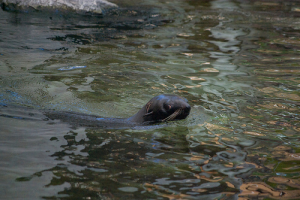Steller Sea Lions: How can we help?
Steller Sea Lions live in the Pacific Rim from Japan to California with 70% living in Alaska. Sadly, their population has been drastically declining since the 1970s due to many reasons:
- predation by killer whales,
- increase in parasites and diseases
- nutritional stress due to competition for food with humans.
Some fishing companies even deliberately kill these animals since they view them as competition and a threat to fish stocks. Currently, the western stock is endangered and the eastern stock is listed as threatened.
Check out our video below for what Beth Young and her colleagues are doing now to save the Steller sea lions and to meet these friendly animals!
https://www.youtube.com/watch?v=pcueT8-PTPE
What is the government doing?
Because Steller sea lions are endangered, several laws have been implemented to protect their survival.
- Fisheries Act: a license is required to operate a fishery, and records of transactions and operations must be produced on demand of a fishery inspector or conservation officer. This practice keeps fisheries from over harvesting, which would harm the Steller sea lion population.
- Endangered Species Act: ensures that federal agencies do not harm any listed species which includes the Steller sea lion. Habitats where the listed animals are found are protected by the Habitat Conservation Plan.
- Marine Mammal Protection Act: provides population censuses, health assessments, development of conservation plans, and protection regulations. This act also appoints staff to conserve and manage the populations of marine mammals that are at risk.
What about other animals?
Steller sea lions aren’t the only animals that can benefit from Beth’s research…

California Sea Lion (Zalophus californianus) on Morro Strand State Beach, Morro Bay, CA. Photo by Mike Baird.
The California sea lion is a close cousin to the Steller sea lion. Currently classified as low risk concern on the IUCN endangered species red list, with time, they may become just as threatened as the Steller sea lion.

Northern fur seal at the New England Aquarium, Boston, Massachusetts. Photo by flickr user cphoffman42.
Another species that could benefit from Beth’s findings is a much smaller second cousin: The Northern Fur Seal. Currently listed as at risk for endangerment on the IUCN list, they are experiencing a downward population trend.
With Beth’s results, we could ensure the food requirements of these species are met so they don’t become a forgotten fossil.
Check out the SCIE 300 communicating science podcast for more information on the Steller sea lion species, how Beth believes her findings could be applied to other species, and potential sources of error in her experiment.
Audio clip: Adobe Flash Player (version 9 or above) is required to play this audio clip. Download the latest version here. You also need to have JavaScript enabled in your browser.
Interview with Beth Young
In Conclusion…
The Steller sea lion plays an important part in the delicate balance of the ecosystem. Every species of life that it interacts with, from the food it eats, to its natural predators, will be greatly affected if the Steller sea lion population continues to decrease. We hope that our various media (the above video, podcast, and this blog post) are able to convey some of the latest research findings on Steller sea lions in a clear and understandable manner, and bring more attention of this matter to the public eye.
More information on why Steller sea lions are endangered, as well as summaries of the latest research findings made at the Open Water Research Lab can be found at the Vancouver Aquarium website.
December 4th, 2011 at 1:49 pm
What a great adventure — and hopefully learning experience — you had with this project! I love that you end the podcast with a bark (is that what it’s called?) from one of the sea lions. Hilarious! More seriously, I think this is a great example of how some fundamental science can have a direct impact on people and the decisions we make.